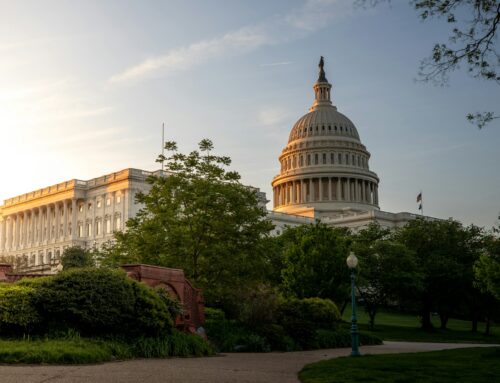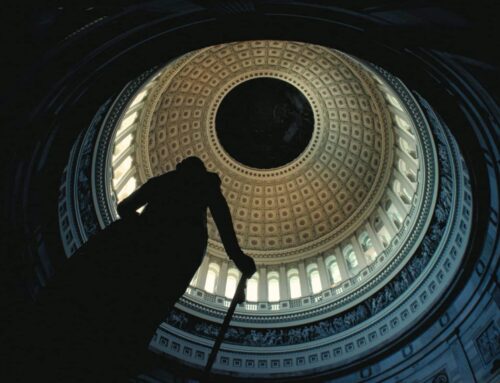If there was ever a time to rethink America’s budget priorities, this is it. Yet a large part of the national security establishment continues to push for massive Pentagon budgets at the expense of spending needed to address the COVID-19 pandemic. A budget battle is brewing that will play out not just for the rest of this year but for years to come.
The Pentagon and major defense contractors have already cashed in on the crisis, with $10.6 billion in added resources set aside for the Pentagon in the relief package passed by Congress in March. And an obscure provision of the $3 trillion CARES act passed by the House – a provision vigorously lobbied for by contractors – will allow companies to bill the government not just for the salaries of vital workers but also for bloated executive salaries and basic overhead – up to and including spending on marketing and sales. The cost of this provision is unclear, but will certainly clock in at billions of dollars.
There’s no question that COVID-19 will impose additional costs on the Pentagon and the military services to protect the troops and adjust its operating procedures. But there are more than enough funds in its $750 billion budget to address these needs without seeking additional taxpayer support, especially at a time when hospitals, states and localities, and small businesses are starved for funds in the midst of the worst recession since the great depression. And the Pentagon already receives more than half of the nation’s discretionary budget – the part that funds most government operations other than Medicare and Social Security. So, finding new funding for public health initiatives will need to come from a combination of revenue increases and reductions in allocations for the Pentagon.
Meanwhile, lawmakers from both parties are endorsing the creation of a new Pacific Deterrence Initiative that would fund hypersonic weapons, missile defense systems, and other systems targeted at China. The cost of the new fund has yet to be determined, but it will no doubt run into billions. As Taxpayers for Common Sense has noted, a similar mechanism – the European Deterrence Initiative (originally called the European Reassurance Initiative) — hit a peak of $6.5 billion and now runs at about $4.5 billion per year. This was on top of the hundreds of billions already being spent by the U.S. and its NATO allies for exactly the same purpose. The European initiative was funded through the Pentagon’s favorite slush fund, the Overseas Contingency Operations (OCO) account. OCO operates outside the Pentagon’s regular budget process, and was used to evade caps on the Pentagon budget imposed by the Budget Control Act of 2011 to funnel tens of billions of additional dollars to the department. Whether the new Pacific fund will tap the OCO account or be housed in the Pentagon’s main budget remains to be seen.
The Pacific Deterrence Initiative is both misguided and unnecessary. The Pentagon budget is already higher than the levels reached during the Korean or Vietnam wars and the peak of the Reagan buildup of the 1980s, more than enough to address any military challenge posed by China. The U.S. already spends two and one-half as much on its military as China does, and there is no evidence that China is seeking to match the United States global military machine, which includes over 800 military bases, 180,000 troops overseas, and a Navy that can be deployed anywhere in the world on short notice.
China’s challenge to the U.S. is more economic and diplomatic than military, so throwing more money at tools of military confrontation is not only a waste of resources, but is likely to be counterproductive. Without U.S.-Chinese cooperation, it will be impossible to adequately address challenges like the global recession, current and future pandemics, or the greatest threat of all – climate change. This cooperation on issues of overriding importance should not preclude assertive diplomatic efforts to oppose China’s human rights abuses and its crackdown in Hong Kong. But military posturing is the last thing that is needed at this moment.
Thankfully, key leaders in Congress have recognized the need to shift funds from overspending on the Pentagon to shoring up the effort to address COVID-19 and prevent future pandemics. A letter organized by Representatives Mark Pocan (D-WI) and Barbara Lee (D-CA) has called for reductions in the Pentagon’s top line to free up funds for dealing with the pandemic. And Rep. Ro Khanna (D-CA) plans to bring an amendment to the National Defense Authorization Act (NDAA) to cut back the $1.5 billion allocated for a dangerous and unnecessary new Intercontinental Ballistic Missile (ICBM) and devote the funds to dealing with the coronavirus instead. These efforts are urgently needed at a time when the Pentagon budget is roughly 70 times higher than U.S. spending on global health. Ultimately what is needed is a comprehensive plan to bulk up the U.S. public health system at the national, state, and local levels. Just as the Pentagon has five-year budget plans and a dedicated research and development fund, so should public health agencies.
The race is on – public health or more money for the Pentagon. The outcome will determine the health and safety of America and the world for years to come.











Get Social